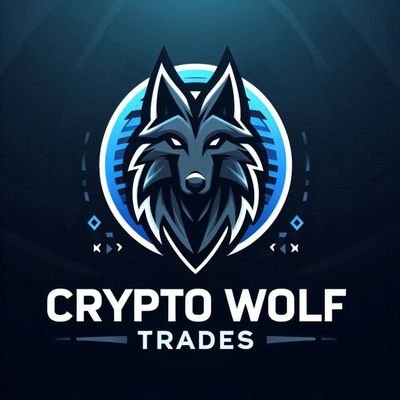
Cartesi priceCTSI
CTSI/USD price calculator
Cartesi market Info
Live Cartesi price today in USD
The cryptocurrency market on October 29, 2025, is buzzing with dynamic developments, showcasing a maturing industry increasingly integrated with traditional finance while pushing the boundaries of decentralized innovation. Key themes dominating today's headlines include robust Bitcoin performance, significant advancements in Ethereum's ecosystem, the widespread adoption and regulation of stablecoins, pioneering strides in Decentralized Finance (DeFi), and the evolving utility of Non-Fungible Tokens (NFTs).
Bitcoin's Steady Ascent Amidst Institutional Inflows
Bitcoin continues to demonstrate strong momentum, trading actively around the $113,000 to $115,000 mark. Analysts are projecting a bullish close for Q4 2025, with targets ranging from $120,000 to $130,000, and some optimistic forecasts even placing it between $158,000 and $180,000 by year-end. This upward trajectory is largely fueled by substantial inflows into spot Bitcoin Exchange-Traded Funds (ETFs), which are attracting hundreds of millions in daily net inflows and boosting investor confidence. Corporate adoption is also on the rise, with more companies strategically holding Bitcoin as a treasury asset. A favorable macroeconomic environment, including anticipated Federal Reserve rate cuts, further supports Bitcoin's appeal as a hedge against currency weakness. While some market observers caution about a potential bear market, a prevailing sentiment suggests that Bitcoin might have established a new floor, with some analysts positing it may never fall below $100,000 again.
Ethereum's Transformative Roadmap in Full Swing
Ethereum’s ecosystem is undergoing a significant transformation, with its ambitious roadmap yielding tangible results. The network is intensely focused on enhancing scalability, security, and user experience through various upgrades. Layer-2 scaling solutions, encompassing both Optimistic and Zero-Knowledge (ZK) Rollups, are central to this effort, aiming to dramatically increase transaction throughput and reduce gas fees. The upcoming Pectra upgrade, expected in Q1 2025, is poised to introduce several critical changes. Looking further ahead, the integration of zkEVM Layer 1, projected between Q4 2025 and Q2 2026, promises a future of modular blockchain design, where Ethereum's base layer provides robust security and data availability, while most transactions occur on faster, more cost-effective Layer-2 environments. Interoperability across various Layer-2s is also a key area of development, aiming to unify liquidity and reduce cross-layer transaction costs.
Stablecoins Cementing Their Role in Global Finance
Stablecoins are no longer just a niche crypto asset; they have emerged as a critical component of the global financial system. Transaction volumes have reached unprecedented levels, surpassing $4 trillion annually and accounting for approximately 30% of all on-chain crypto transaction volume. This surge underscores their growing importance, driven by their ability to offer consistency amidst market volatility and facilitate efficient cross-border payments. Institutional adoption of stablecoins is rapidly accelerating, with major financial players recognizing their potential for treasury operations and real-time payments. Regulatory bodies worldwide are responding with comprehensive frameworks: the US has enacted the GENIUS Act, providing a clear federal regulatory scheme for payment stablecoins, while the EU's Markets in Crypto-Assets Regulation (MiCA) is establishing uniform market rules. Australia's ASIC has also clarified how existing laws apply to digital assets, including stablecoins. These regulatory advancements are fostering trust and laying the groundwork for even broader integration of stablecoins into traditional financial sectors.
DeFi Innovation and the Rise of Real-World Assets (RWAs)
Decentralized Finance (DeFi) continues its rapid evolution, moving beyond early speculative phases to focus on real-world utility and attracting significant institutional interest. Innovations like chain abstraction, exemplified by projects such as Mono Protocol, are aiming to simplify multi-chain interactions by unifying token balances across various blockchains. The tokenization of yield, improved data infrastructure, and robust risk management solutions are also defining the sector's maturity. A particularly hot event is the burgeoning role of Real-World Assets (RWAs), which are creating a powerful bridge between traditional finance and DeFi. Tokenized treasuries and private credit currently dominate the RWA market, offering yield-bearing stability. The convergence of AI and DeFi is also gaining traction, with platforms exploring AI-driven payment systems and yield generation, signaling a new era of sophisticated decentralized financial products.
NFTs Evolve Towards Practical Utility
The Non-Fungible Token (NFT) market, having weathered a period of speculation, is now demonstrating a clear shift towards practical utility. While digital art still holds its place, the focus has broadened significantly to include gaming NFTs, Real-World Asset (RWA) NFTs, and identity/access NFTs. The global NFT market is projected to reach an estimated $49 billion by the end of 2025, with gaming NFTs representing a substantial portion of transactions. Projects are leveraging NFTs for loyalty programs, digital identity verification, and integrating them into Web3 gaming experiences. This evolution signifies a maturation of the NFT space, moving beyond collectibles to offer tangible value and functional applications across various industries, from entertainment to real estate.
Do you think the price of Cartesi will rise or fall today?
Now that you know the price of Cartesi today, here's what else you can explore:
How to buy Cartesi (CTSI)?How to sell Cartesi (CTSI)?What is Cartesi (CTSI)What would have happened if you had bought Cartesi (CTSI)?What is the Cartesi (CTSI) price prediction for this year, 2030, and 2050?Where can I download Cartesi (CTSI) historical price data?What are the prices of similar cryptocurrencies today?Want to get cryptocurrencies instantly?
Buy cryptocurrencies directly with a credit card.Trade various cryptocurrencies on the spot platform for arbitrage.Cartesi price prediction
When is a good time to buy CTSI? Should I buy or sell CTSI now?
What will the price of CTSI be in 2026?
In 2026, based on a +5% annual growth rate forecast, the price of Cartesi(CTSI) is expected to reach $0.05411; based on the predicted price for this year, the cumulative return on investment of investing and holding Cartesi until the end of 2026 will reach +5%. For more details, check out the Cartesi price predictions for 2025, 2026, 2030-2050.What will the price of CTSI be in 2030?
About Cartesi (CTSI)
What Is Cartesi?
Cartesi is a decentralized Layer 2 infrastructure that serves as a bridge between traditional software environments, like Linux, and the blockchain, enabling the development of decentralized applications (DApps) using mainstream programming languages. It acts as a scalable solution, allowing developers to code scalable smart contracts with the software tools and services they are accustomed to, thus accelerating the development of Web 3.0. Cartesi is often regarded as the first operating system on the blockchain, as it integrates both on-chain and off-chain components, solving issues related to scalability and allowing developers to perform intensive computations that are traditionally not available on blockchains.
Founded in 2018 by Erick de Moura, Augusto Teixeira, Diego Nehab, and Colin Steil, Cartesi was initially conceived as a trustless artificial intelligence marketplace before evolving into a blockchain operating system. The project has received significant investment from entities like Bigbang Angels, Taiwan Startup Stadium, ICONIUM, SOSV, and Artesian VC, and it aims to increase ecosystem and network adoption, with plans for further decentralization of governance in the future.
Resources
Official Documents: https://docs.cartesi.io/
Official Website: https://cartesi.io/
How Does Cartesi Work?
Cartesi operates by providing a Linux-based virtual machine, the Cartesi Machine, which can run a full-fledged Linux operating system and implement DApp calculations off-chain, allowing for virtually unlimited data processing. This off-chain computation capability is crucial as it addresses the scalability limitations of many existing blockchains by reducing the burden of on-chain computations, enabling more complex and computation-intensive DApps to run efficiently and securely. The platform utilizes a combination of on-chain and off-chain components, including Cartesi Rollups and Noether sidechain, to achieve higher scalability and maintain the security of the underlying blockchain.
Cartesi introduces several innovative components like Descartes SDK, which allows developers to run computations that are too expensive to execute on a traditional blockchain, and Cartesi Rollups, a Layer 2 system that enables the blockchain to provide data availability and order input data, resolve disputes, and bridge tokens between Layer 1 and Layer 2. The Noether sidechain is used for data storage off the main blockchain, reducing gas fees and improving storage management. These components, combined with the platform's high scalability, mainstream programmability, portability across major blockchains, and privacy features, make Cartesi a unique and powerful solution in the blockchain space.
What Is CTSI Token?
CTSI is the native utility token of the Cartesi platform, playing a pivotal role in powering Cartesi's operations. It is used for various purposes within the Cartesi ecosystem, including paying for computation services, transaction fees, staking, and participating in the network's governance through the Cartesi DAO. CTSI is also essential for operations on the Noether sidechain, facilitating off-chain computations and enhancing scalability. The token can be staked to participate in block validation and creation, with stakers rewarded with additional CTSI coins as an incentive for securing the network.
Cartesi's Impact on Finance
Cartesi's innovative approach to decentralized application development has significant implications for the finance sector, particularly in the realm of decentralized finance (DeFi). By allowing developers to use mainstream programming languages and software stacks, Cartesi lowers the entry barrier for the development of financial DApps, potentially leading to a proliferation of advanced financial applications on the blockchain. This could result in more sophisticated and user-friendly DeFi products, broadening the appeal and accessibility of decentralized financial services to a wider range of users and traditional finance entities.
Cartesi's impact extends to play-to-earn games, blockchain-based voting, yield farming, staking protocols, and NFTs, providing a versatile and scalable platform for developing a variety of blockchain applications. The project's emphasis on interoperability, scalability, and reduced transaction fees addresses some of the critical needs of blockchain users, making it a pivotal player in the future development of blockchain technology and its applications in finance.
What Determines Cartesi's Price?
The price of Cartesi (CTSI) is influenced by a myriad of factors, reflecting the intricate dynamics of the cryptocurrency market. One of the primary determinants of Cartesi's cryptocurrency price is market supply and demand, driven by cryptocurrency enthusiasts and the broader crypto community's perception of its value and potential as a blockchain solution. When the demand for CTSI tokens increases, perhaps due to positive cryptocurrency news or favorable cryptocurrency analysis from cryptocurrency experts and influencers, the price tends to rise. Conversely, negative news, regulatory challenges, or unfavorable market trends can lead to a decrease in demand and, subsequently, a decline in price.
Another crucial factor determining the price of Cartesi is its development progress and adoption rate in the realm of decentralized applications. The more widespread the adoption and the more robust the development, the more likely it is to experience a positive impact on its price. Cryptocurrency charts and crypto market analysis often consider technological advancements, partnerships, and the overall progress of the blockchain project when making price predictions for 2023 and beyond. Additionally, the overall state of the cryptocurrency market, including market volatility, cryptocurrency regulation, and cryptocurrency risks, plays a significant role in shaping the price trajectory of CTSI. Potential investors often turn to leading exchanges such as Bitget to buy cryptocurrency.
Bitget Insights



CTSI/USD price calculator
CTSI resources
Tags:
What can you do with cryptos like Cartesi (CTSI)?
Deposit easily and withdraw quicklyBuy to grow, sell to profitTrade spot for arbitrageTrade futures for high risk and high returnEarn passive income with stable interest ratesTransfer assets with your Web3 walletWhat is Cartesi and how does Cartesi work?
Global Cartesi prices
Buy more
FAQ
What is use case of Cartesi?
What is the Cartesi (CTSI) token?
What is the future of Cartesi?
Who founded Cartesi?
What makes Cartesi unique?
How are the tokens distributed?
What is the current price of Cartesi?
What is the 24 hour trading volume of Cartesi?
What is the all-time high of Cartesi?
Can I buy Cartesi on Bitget?
Can I get a steady income from investing in Cartesi?
Where can I buy Cartesi with the lowest fee?
Related cryptocurrency prices
Prices of newly listed coins on Bitget
Hot promotions
Where can I buy Cartesi (CTSI)?
Video section — quick verification, quick trading









